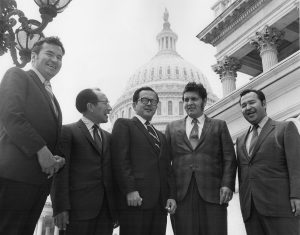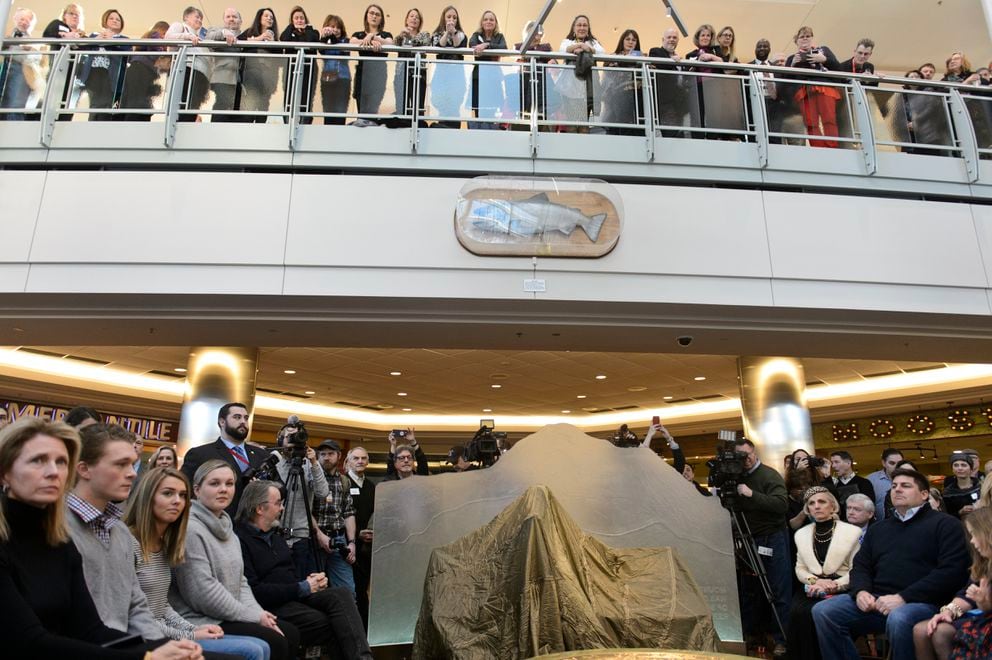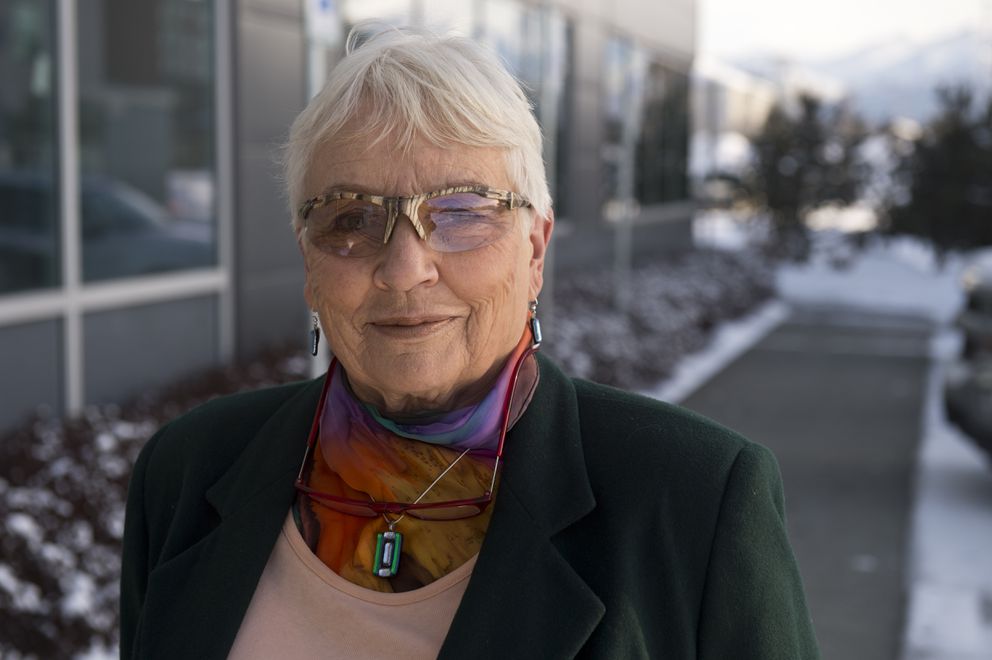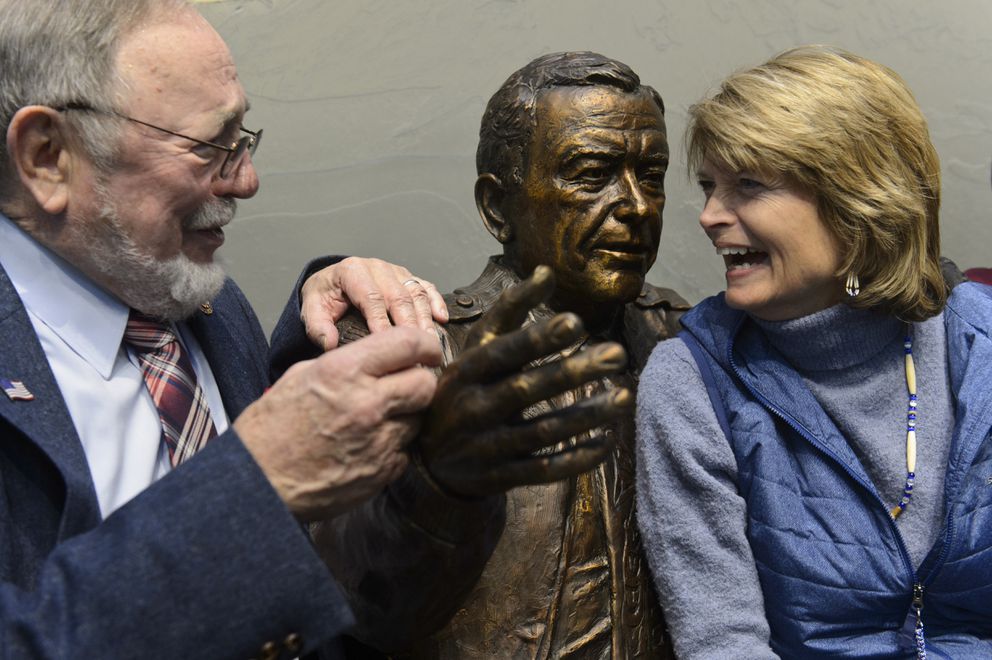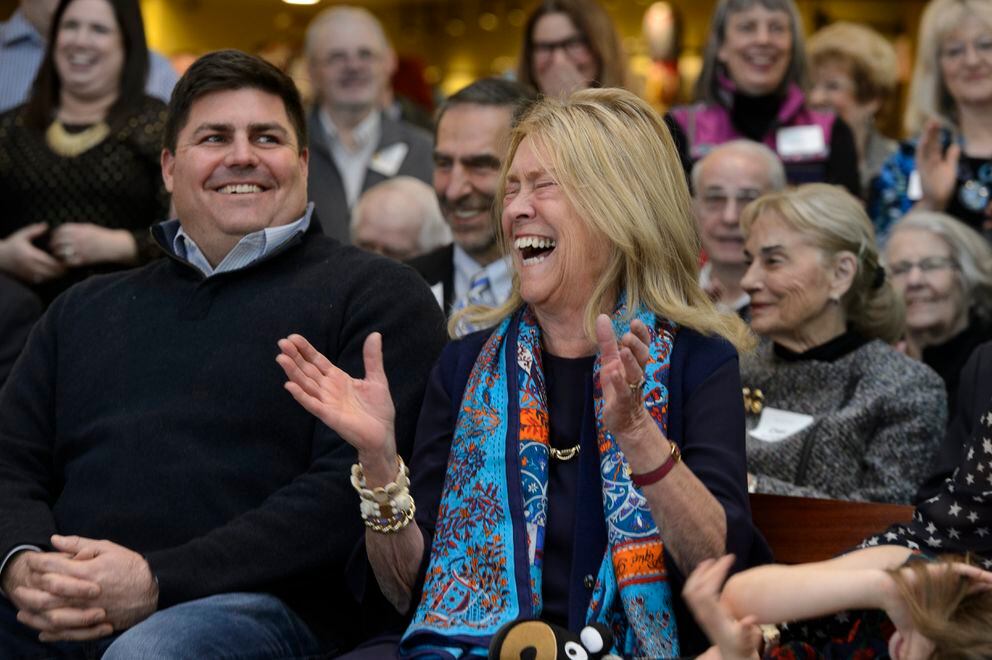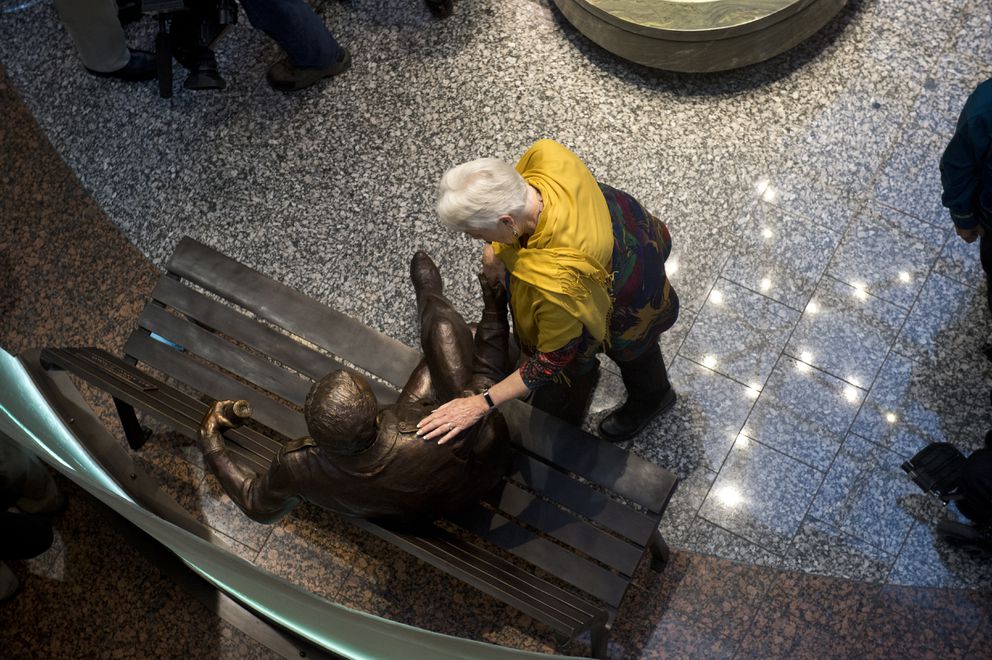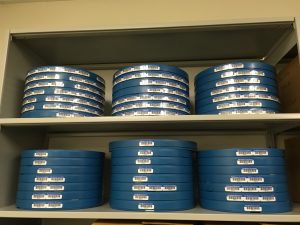Ted Stevens resisted the idea that the airport named for him should also bear his likeness when he was alive, his daughter Lily Stevens Becker said. He didn’t care much for the fanfare.
After his death, it took years for the family to get comfortable with the idea of seeing his life-size image cast in bronze.
“But now I think it’s time,” Stevens Becker said.
On Saturday, hundreds surrounded a 631-pound statue of Stevens as it was uncovered at Ted Stevens Anchorage International Airport. Some watched from a balcony above. Stevens, who served in the U.S. Senate for 40 years, is depicted seated and relaxed, as if inviting conversation with passers-by at Alaska’s largest airport.
“There’s an expression I tried really hard to capture that is like speaking but almost smiling,” said Joan Bugbee Jackson, the Cordova sculptor who created the piece.
Karina Waller, executive director of the Ted Stevens Foundation, which oversaw the privately funded project, hopes the statue’s high-traffic location will capture attention and educate people about a giant figure in Alaska history. She declined to say what it cost.
“It’d be nice to have something in the airport, not only for Alaskans but for travelers who say, ‘Well, who’s Ted Stevens?’ ” Waller said.
To many Alaskans, Stevens needs no introduction. His decades in the Senate, which began in 1968, made him one of the 10 longest-serving senators in U.S. history. He championed Alaska transportation and infrastructure projects, supported construction of the trans-Alaska oil pipeline, protected Alaska commercial fisheries and played key roles in legislation that shaped the state. He was widely known as “Uncle Ted.”
In his farewell speech on the Senate floor in 2008, Stevens said he treasured every moment.
“I feel the same way now that I did in 1968,” he said. “I really must pinch myself to fully understand that I’m privileged to speak on the floor of the United States Senate.”
Stevens died in a plane crash near Dillingham in 2010.
When the statue project got underway about two years ago, deciding which Stevens to portray proved a challenge, Waller said. Stevens was famously mercurial, by turns charming and serious, and sometimes Incredible Hulk combative.
Waller, a member of Stevens’ staff from 2002 to 2009, said she originally favored a strong and serious pose of the man she still refers to as “the boss.” Bugbee Jackson said she was captivated by the intensity of a lost-in-thought pose she had seen in a photograph.
Both say they were swayed by the input of Stevens’ widow, Catherine, who suggested an approachable posture for an engaging personality. That input changed the project’s direction.
“I think at the end of the day, you’ll see she was right,” Waller said days before the statue was unveiled.
The statue took about a year and a half to create, Bugbee Jackson said. Her other bronze sculptures in Alaska include the Veterans Monument on the Delaney Park Strip in Anchorage, the Alexander Baranov Monument in Sitka and the Joe Redington Memorial at the Iditarod headquarters in Wasilla.
